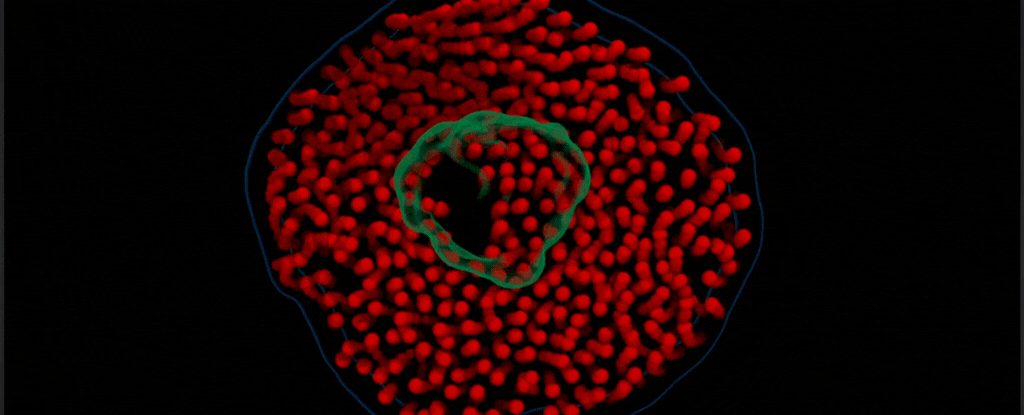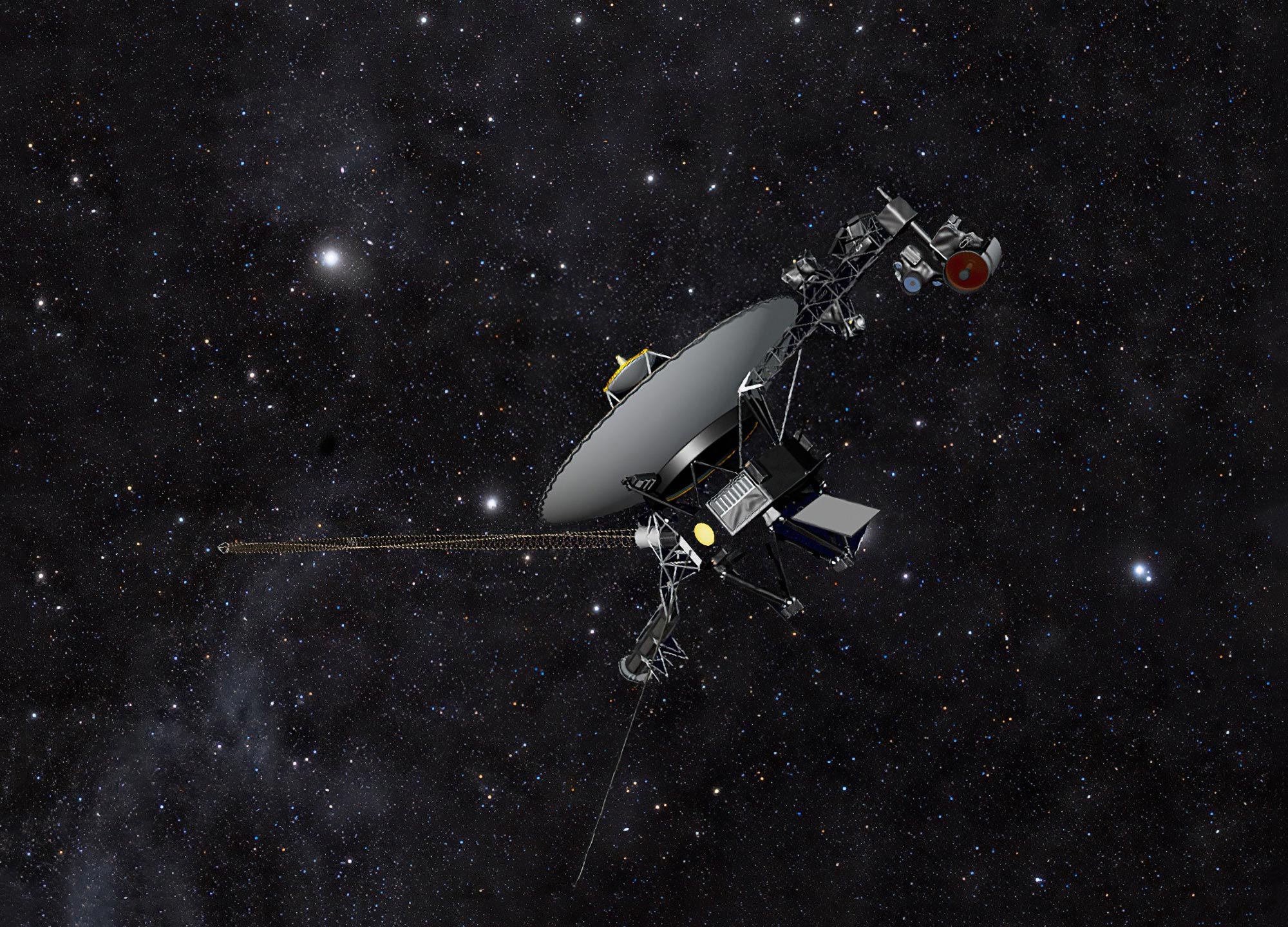Концепт этого художника показывает космический корабль НАСА «Вояджер» на фоне звездного поля в темноте космоса. Два космических корабля «Вояджер» удаляются все дальше и дальше от Земли, совершая путешествие в межзвездное пространство, и в конечном итоге окажутся вокруг центра Млечного Пути. Авторы и права: НАСА/Лаборатория реактивного движения-Калифорнийский технологический институт.
Согласно плану, научные инструменты «Вояджера-2» будут работать на несколько лет дольше, чем ожидалось ранее, что позволит делать больше открытий из межзвездного пространства.
Запущенный в 1977 году космический корабль «Вояджер-2» находится на расстоянии более 12 миллиардов миль (20 миллиардов километров) от Земли, используя пять научных инструментов для изучения межзвездного пространства. Чтобы эти устройства продолжали работать, несмотря на истощающиеся источники питания, стареющий космический корабль начал использовать небольшой резервуар резервного питания, отложенный как часть бортового механизма безопасности. Этот шаг позволит миссии отложить закрытие научного прибора до 2026 года, а не в этом году.
Выключение научного прибора не завершит работу. После отключения одного прибора в 2026 году зонд будет продолжать питать четыре научных прибора до тех пор, пока из-за низкого напряжения питания не потребуется отключить еще один. Если «Вояджер-2» останется здоровым, команда инженеров ожидает, что миссия будет продолжаться еще долгие годы.

Проверочная тестовая модель «Вояджера», представленная в комнате моделирования космического пространства в Лаборатории реактивного движения в 1976 году, была точной копией двух космических зондов «Вояджер», запущенных в 1977 году. Платформа для съемки модели простирается вправо, удерживая несколько научных инструментов космического корабля при ее публикации. . позиции. Авторы и права: НАСА/Лаборатория реактивного движения-Калифорнийский технологический институт.
«Вояджер-2» и его близнец «Вояджер-1» — единственные два космических корабля, которые работают за пределами гелиосферы, защитного пузыря частиц и магнитных полей, создаваемых Солнцем. Зонды помогают ученым ответить на вопросы о форме гелиосферы и ее роли в защите Земли от энергичных частиц и другого излучения в межзвездной среде.
— сказала Линда Спилкер, ученый проекта «Вояджер».[{» attribute=»»>NASA’s Jet Propulsion Laboratory in Southern California, which manages the mission for NASA.
Power to the Probes
Both Voyager probes power themselves with radioisotope thermoelectric generators (RTGs), which convert heat from decaying plutonium into electricity. The continual decay process means the generator produces slightly less power each year. So far, the declining power supply hasn’t impacted the mission’s science output, but to compensate for the loss, engineers have turned off heaters and other systems that are not essential to keeping the spacecraft flying.
With those options now exhausted on Voyager 2, one of the spacecraft’s five science instruments was next on their list. (Voyager 1 is operating one less science instrument than its twin because an instrument failed early in the mission. As a result, the decision about whether to turn off an instrument on Voyager 1 won’t come until sometime next year.)

Each of NASA’s Voyager probes are equipped with three radioisotope thermoelectric generators (RTGs), including the one shown here. The RTGs provide power for the spacecraft by converting the heat generated by the decay of plutonium-238 into electricity. Credit: NASA/JPL-Caltech
In search of a way to avoid shutting down a Voyager 2 science instrument, the team took a closer look at a safety mechanism designed to protect the instruments in case the spacecraft’s voltage – the flow of electricity – changes significantly. Because a fluctuation in voltage could damage the instruments, Voyager is equipped with a voltage regulator that triggers a backup circuit in such an event. The circuit can access a small amount of power from the RTG that’s set aside for this purpose. Instead of reserving that power, the mission will now be using it to keep the science instruments operating.
Although the spacecraft’s voltage will not be tightly regulated as a result, even after more than 45 years in flight, the electrical systems on both probes remain relatively stable, minimizing the need for a safety net. The engineering team is also able to monitor the voltage and respond if it fluctuates too much. If the new approach works well for Voyager 2, the team may implement it on Voyager 1 as well.
“Variable voltages pose a risk to the instruments, but we’ve determined that it’s a small risk, and the alternative offers a big reward of being able to keep the science instruments turned on longer,” said Suzanne Dodd, Voyager’s project manager at JPL. “We’ve been monitoring the spacecraft for a few weeks, and it seems like this new approach is working.”
The Voyager mission was originally scheduled to last only four years, sending both probes past Saturn and Jupiter. NASA extended the mission so that Voyager 2 could visit Neptune and Uranus; it is still the only spacecraft ever to have encountered the ice giants. In 1990, NASA extended the mission again, this time with the goal of sending the probes outside the heliosphere. Voyager 1 reached the boundary in 2012, while Voyager 2 (traveling slower and in a different direction than its twin) reached it in 2018.
More About the Mission
Jet Propulsion Laboratory (JPL), a division of Caltech in Pasadena, built and operates the Voyager spacecraft. The Voyager missions are a part of the NASA Heliophysics System Observatory, sponsored by the Heliophysics Division of the Science Mission Directorate in Washington.

«Наркоман поп-культуры. Поклонник телевидения. Ниндзя алкоголика. Абсолютный фанат пива. Профессиональный знаток твиттера».




/cdn.vox-cdn.com/uploads/chorus_asset/file/24062762/STK110_whats_app_Kradtke_01.jpg)

More Stories
Ученые впервые запечатлели на видео танец белков и жиров: ScienceAlert
Миссия Starlink во вторник с мыса Канаверал
SpaceX уже запустила большее количество ракет-носителей, чем большинство других когда-либо запускавшихся.